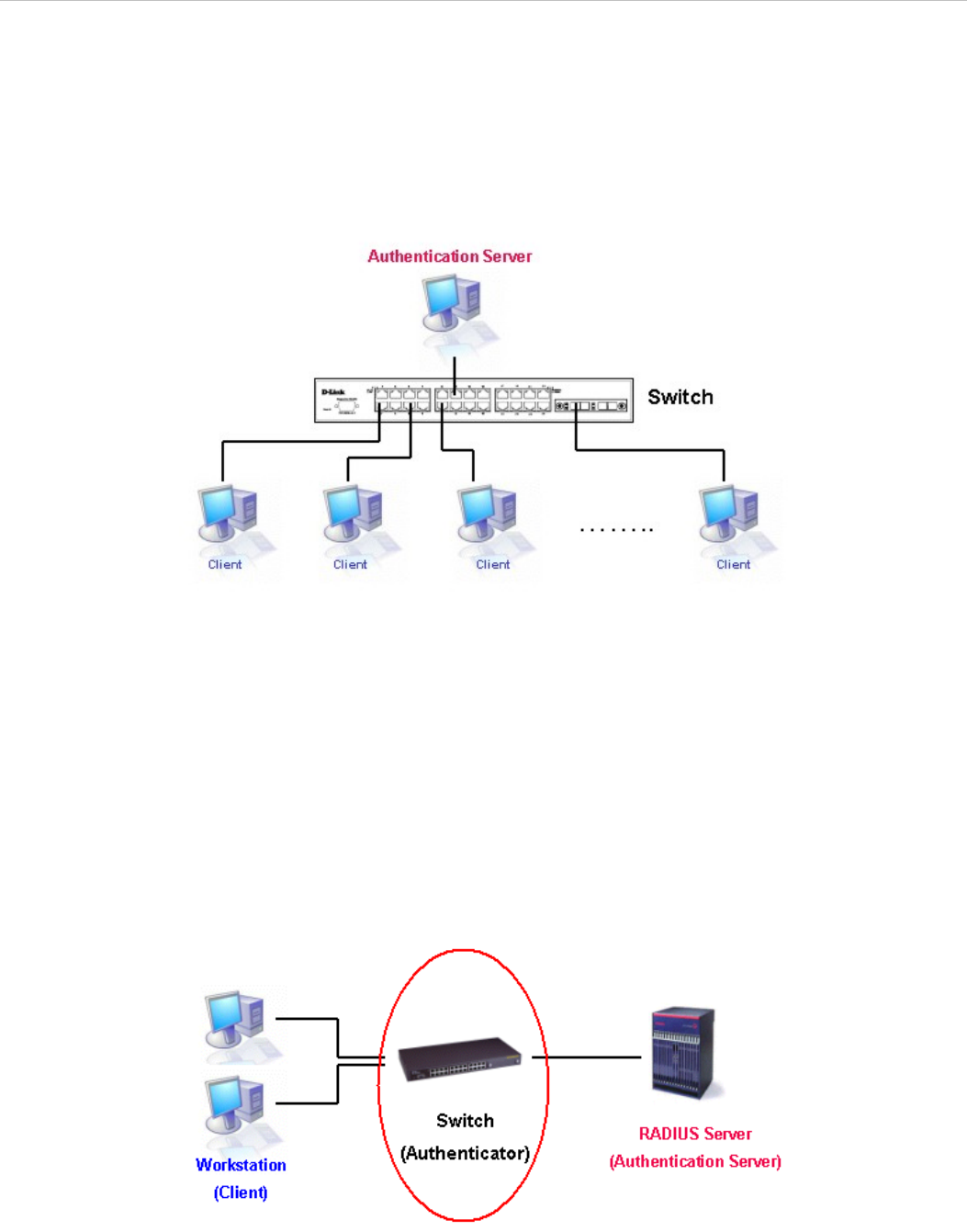
xStack
®
DES-3200-10/18/28/28F Layer 2 Ethernet Managed Switch User Manual
Authentication Server
The Authentication Server is a remote device that is connected to the same network as the Client and Authenticator,
must be running a RADIUS Server program and must be configured properly on the Authenticator (Switch). Clients
connected to a port on the Switch must be authenticated by the Authentication Server (RADIUS) before attaining any
services offered by the Switch on the LAN. The role of the Authentication Server is to certify the identity of the Client
attempting to access the network by exchanging secure information between the RADIUS server and the Client
through EAPOL packets and, in turn, informs the Switch whether or not the Client is granted access to the LAN and/or
switches services.
Figure 5 - 13. The Authentication Server
Authenticator
The Authenticator (the Switch) is an intermediary between the Authentication Server and the Client. The Authenticator
serves two purposes when utilizing the 802.1X function. The first purpose is to request certification information from
the Client through EAPOL packets, which is the only information allowed to pass through the Authenticator before
access is granted to the Client. The second purpose of the Authenticator is to verify the information gathered from the
Client with the Authentication Server, and to then relay that information back to the Client.
Three steps must be implemented on the Switch to properly configure the Authenticator.
1. The 802.1X state must be Enabled. (Security / 802.1X /802.1X Settings)
2. The 802.1X settings must be implemented by port (Security / 802.1X / 802.1X Settings)
3. A RADIUS server must be configured on the Switch. (Security / 802.1X / Authentic RADIUS Server)
Figure 5 - 14. The Authenticator
123


















